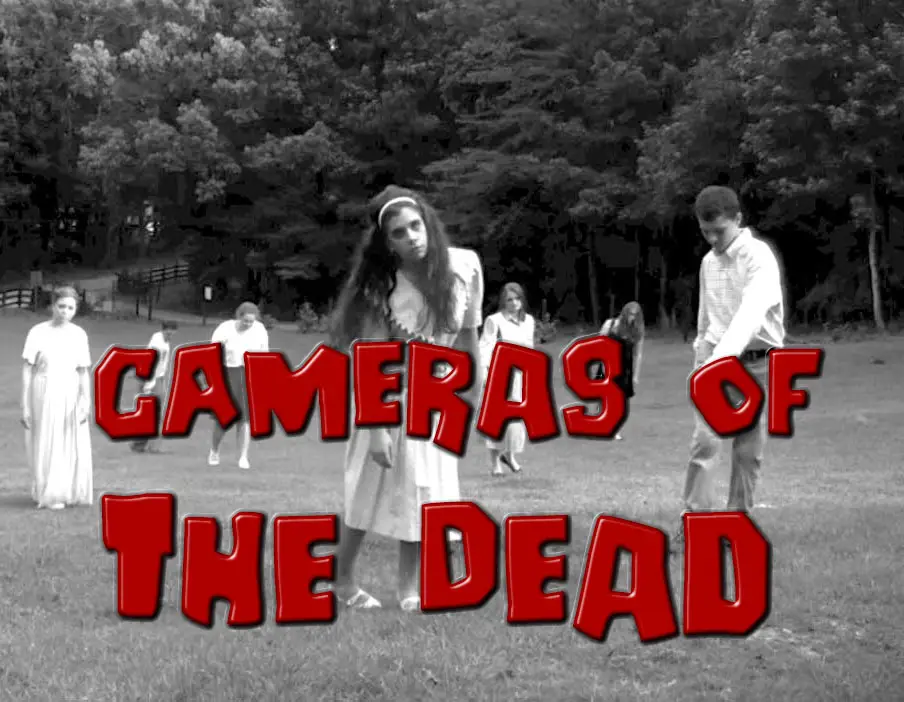 This review is part of the Cameras of the Dead series which I have been publishing every year on Halloween and “Halfway to” Halloween, featuring three cameras that I’ve wanted to review that either didn’t work, or was otherwise unable to shoot.
This review is part of the Cameras of the Dead series which I have been publishing every year on Halloween and “Halfway to” Halloween, featuring three cameras that I’ve wanted to review that either didn’t work, or was otherwise unable to shoot.
I am republishing each of those individual reviews this October in anticipation of this Halloween’s Cameras of the Dead post as a way to revisit the cameras of the past that allows them to be properly indexed on the site.
This is the Ultra-Fex, an inexpensive Bakelite camera made in France by Fex (acronym for French Export) between the years 1947 to 1966. It shoots eight 6cm x 9cm images on 620 roll film. The camera is very ornate, but also very basic, featuring a fixed focus meniscus lens, a collapsible front, and a curved film plane. The shutter has two speeds, plus Bulb, and there are two diaphragm sizes, labeled “Normal” and “Intense”. There are a couple of different variations of this camera, some with a flash port, but they all have the same basic formula. It’s simplistic feature set and long production run suggest it was an inexpensive option for children or beginning photographers.
Film Type: 620 Roll Film (eight 6cm x 9cm images per roll)
Lens: ~90mm ~f/11 Fexar Optic Spec uncoated Meniscus
Focus: Fixed Focus ~2m to Infinity
Viewfinder: Optical Scale Focus
Shutter: Metal Blade
Speeds: P (Bulb), 1/25, and 1/100 seconds
Exposure Meter: None
Battery: None
Flash Mount: None
Weight: 444 grams
Manual: https://mikeeckman.com/media/UltraFexManual.pdf (in French)
My Thoughts
I like all kinds of cameras. If you’ve been reading this site for any length of time, you’ll see that I give equal attention to high profile cameras like the Kodak Ektra as I do cheap box cameras. If it’s a camera and looks interesting to me, then there’s a chance I’ll review it.
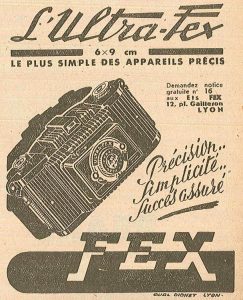
This Fex Ultra Fex (what a name) was formerly part of the private collection of master-collector, Ira Cohen, and when it came to me, I couldn’t tell what kind of camera this was. Was this a high end medium format camera, or a cheap piece of Bakelite. Well, without going any farther, seeing the camera’s large size, but light weight of 444 grams should tell you all you need to know.
There’s no way that anyone could say with a straight face that there’s anything “Ultra” about this camera, except maybe the ultra-blue ring around the lens. Why is that even there? Maybe it’s to trick you into thinking the uncoated single element lens has that fancy blue multi-coating that was just starting to become popular around the time this camera was first produced.
The camera shoots 6cm x 9cm exposures on Kodak’s 620 film which I find pretty strange, considering that only Kodak and a few small American companies ever supported 620, so why this French built camera supported it, is anyone’s guess.
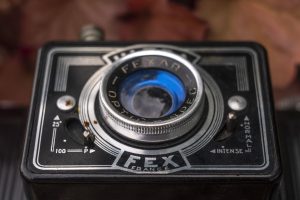
The Fex Ultra Fex was in production for nearly two decades and it’s cheap design suggests it sold for very little and probably was a popular choice for amateurs or children. As with most cheap cameras, the shutter is a rudimentary spring design with only 2 speeds. The great thing about cheap cameras like these, is that their mechanics are so basic, there’s nothing to go wrong. Well, not here.
Unlike other children’s cameras or simple box cameras, the shutter on this Fex Ultra Fex didn’t work. Upon close inspection, pressing the shutter release moves a spring tensioned “flap” over a hole through the back of the lens, but it’s supposed to catch a second flap, which opens the shutter exposing film, but this catch is broken. How did this happen? Was this particular camera used so much that it wore out, or is the camera so cheaply built that the French camera makers who built it, couldn’t even get a two speed shutter to work?
Had I been able to shoot the Fex, I would have loaded film by first removing the back of the camera which is held on by sliding metal clips on both sides. The camera’s cheap construction really shows in the film compartment as you can visibly see a spring connecting one of the metal flaps of the shutter through a rectangular opening in the film gate.
Film transport is from right to left onto a removeable take up spool. It’s not obvious in this pictures, but in order to insert a new roll of film, you must first remove the empty supply spool on the right by completely unscrewing the metal knob on the top of the camera and pulling out a long threaded shaft that goes through the center of the spool and screws into a hole at the bottom. The first time I tried to move the spool, I couldn’t figure it out until I realized you have to take the whole thing out!
The film plane is curved, which is a common trick for single element meniscus lenses to maximize sharpness at the corners, but there is no film pressure plate. The curved rear door of the camera has several horizontal strips that put pressure on the film as it transports through the camera. A warning on the inside of the rear door says “Utilise les bobines 6×9 a joues reduites” which Google Translate suggests is “Uses 6×9 coils with reduced cheeks”, so those of you with large cheeks might want to stay away.
The top and bottom of the camera are quite barren featuring only the advance knob and another knob which does nothing. On the bottom is a 3/8″ European tripod socket. Had you wanted to mount the camera to a modern tripod to shoot images in Bulb (indicated by a P) mode, you’d need a 3/8″ to 1/4″ adapter.
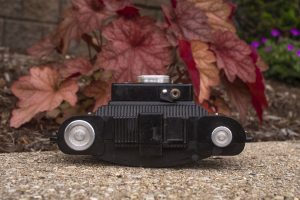
The Fex has a collapsible front which must be extended to properly shoot the camera. With the camera collapsed, it is still quite big and would not easily fit in a small bag, owing to the very large body. The shutter release is positioned on the top of the shutter plate and would normally have had some type of rotating flash collar, which on this example has broken off.
The front of the camera has switches for changing between shutter speeds of 1/25, 1/100, and P (Bulb), and on the other side, an aperture selector labeled “Normal” and “Intense”. Like other cheap cameras, there is no iris in the camera, rather a metal plate with a smaller hole that when set to “Intense” decreases the opening of light from the lens to the focal plane.
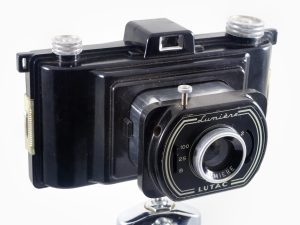
The Ultra Fex is a neat looking camera that I was bummed I couldn’t shoot. While doing some research for this article, I found some sample images on the Lomography site showing that the camera delivers surprisingly good shots, including some shot on 35mm, suggesting the single-element Fexar lens was of decent construction.
I also saw that there was a name variant of the Ultra Fex called the Lumiere Lutac that also appeared to have been sold in France around 1957. The Lutac is cosmetically different, but the overall shape and feature set of the camera clearly show that it’s the same camera.
Regardless of what could have been, this particular Ultra Fex has likely been deceased for far longer than I’ve had it, and it’s unlikely it will ever shoot any more photographs again.
Related Posts You Might Enjoy
External Links
http://camera-wiki.org/wiki/Ultra-Fex
http://www.collection-appareils.fr/x/html/page_standard.php?id_appareil=510
http://www.artdecocameras.com/cameras/fex-indo/ultra-himalaya/
https://www.photo.net/discuss/threads/meet-the-ultra-fex.5509624/

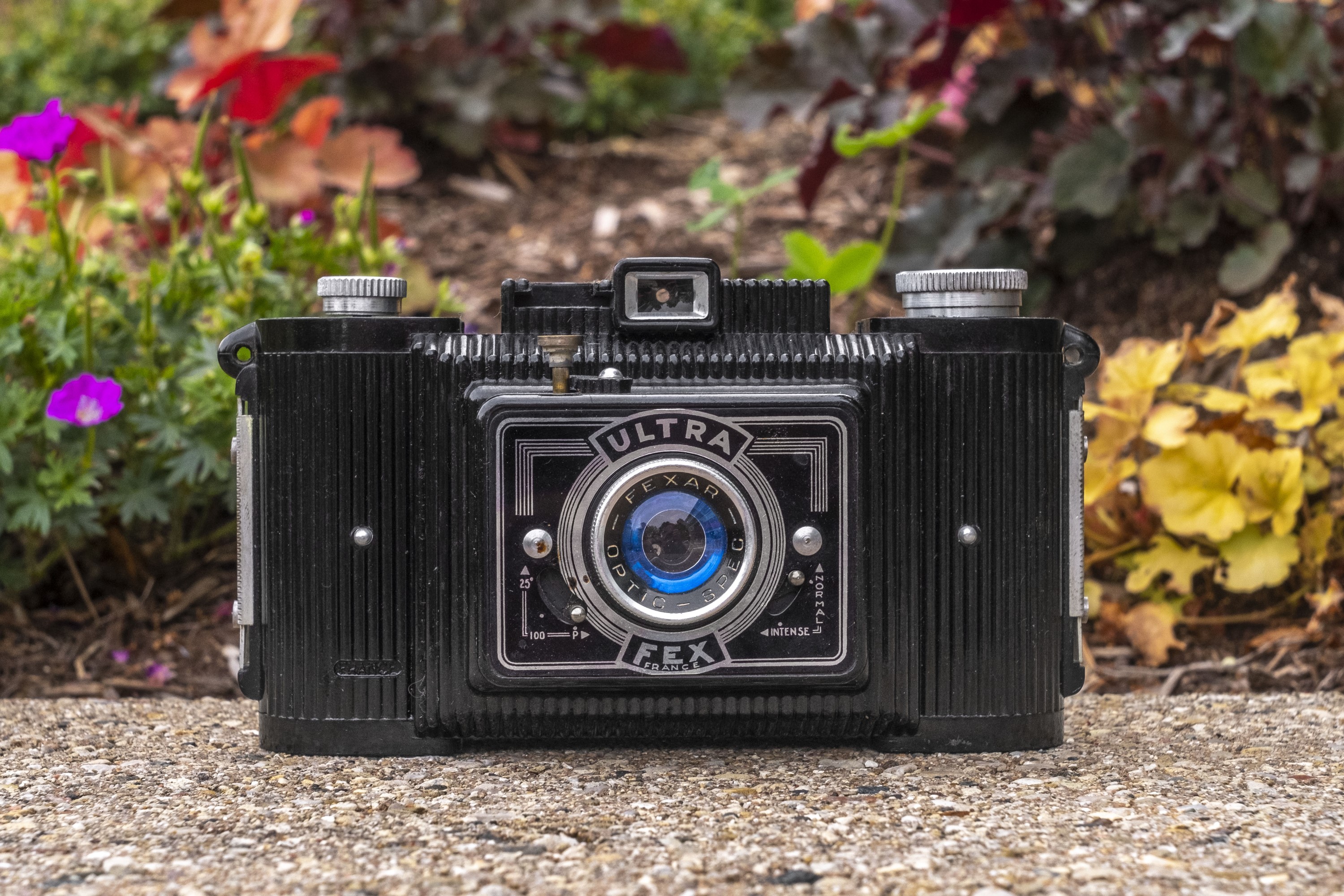
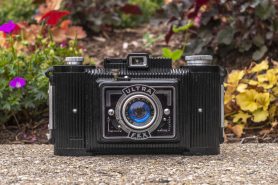
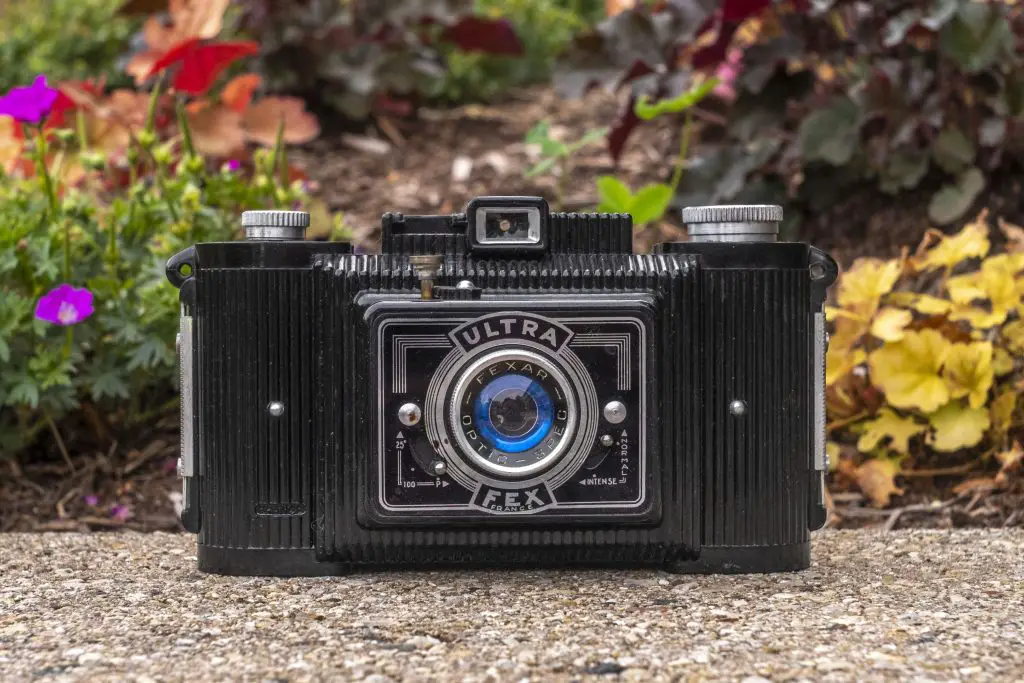
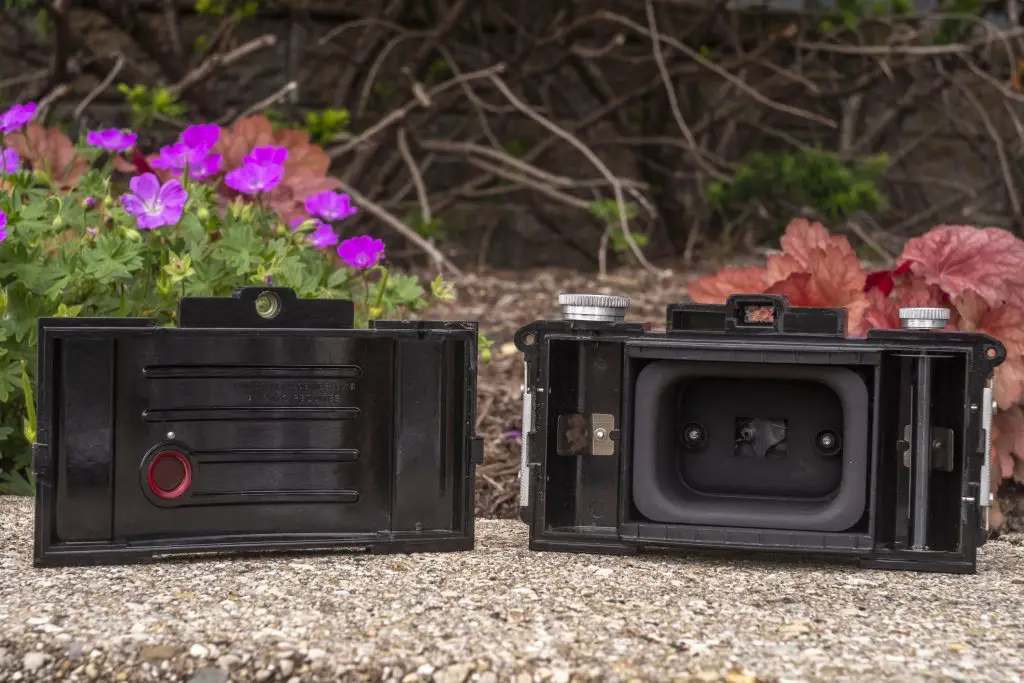
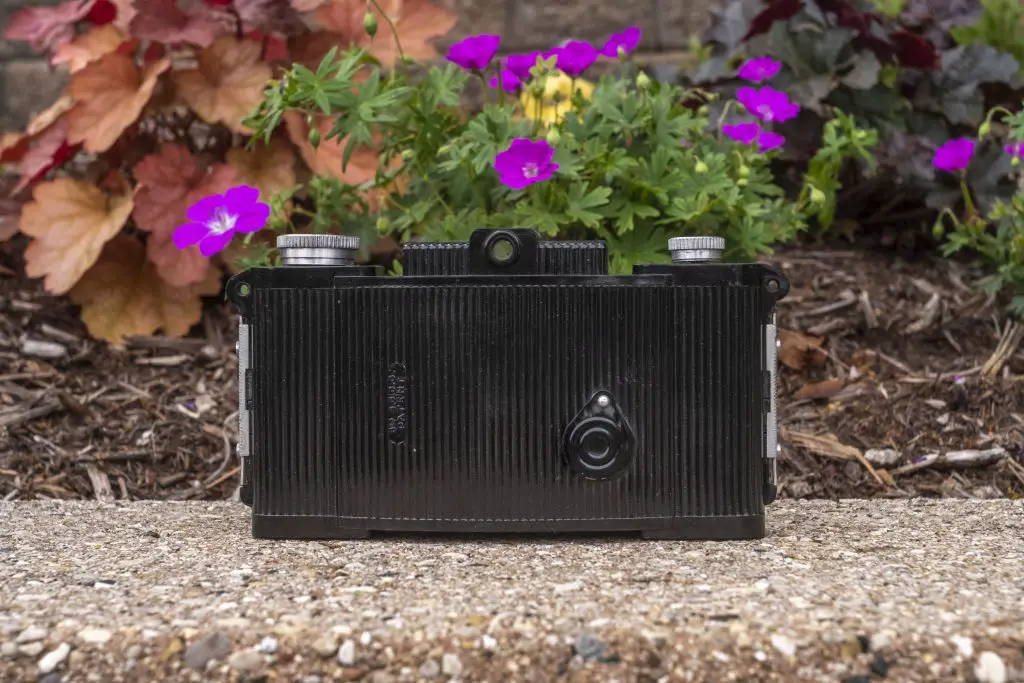

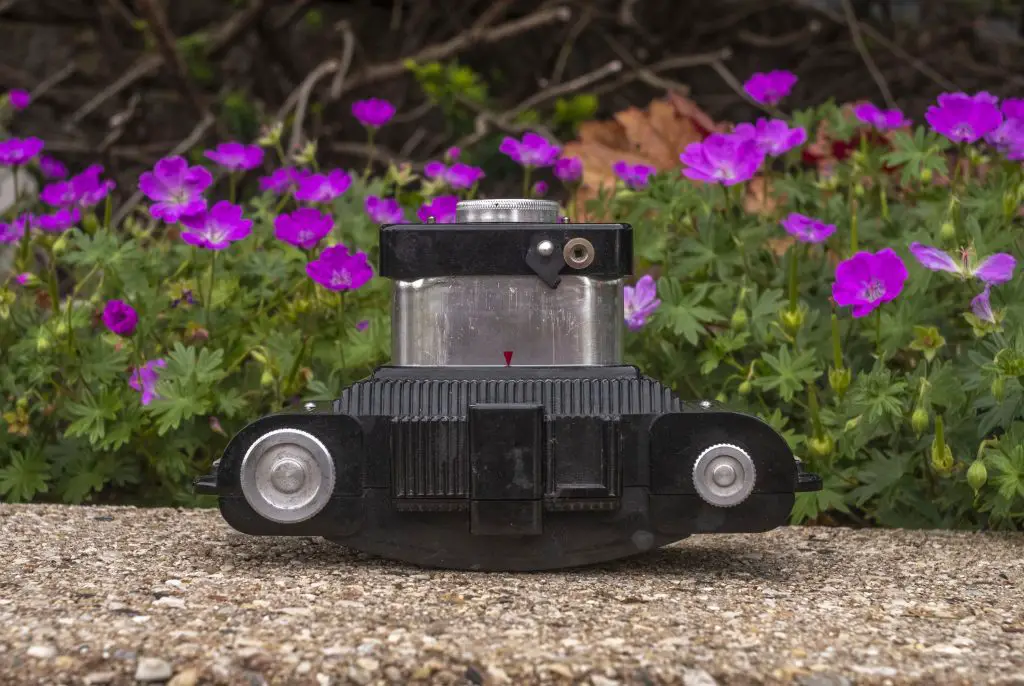
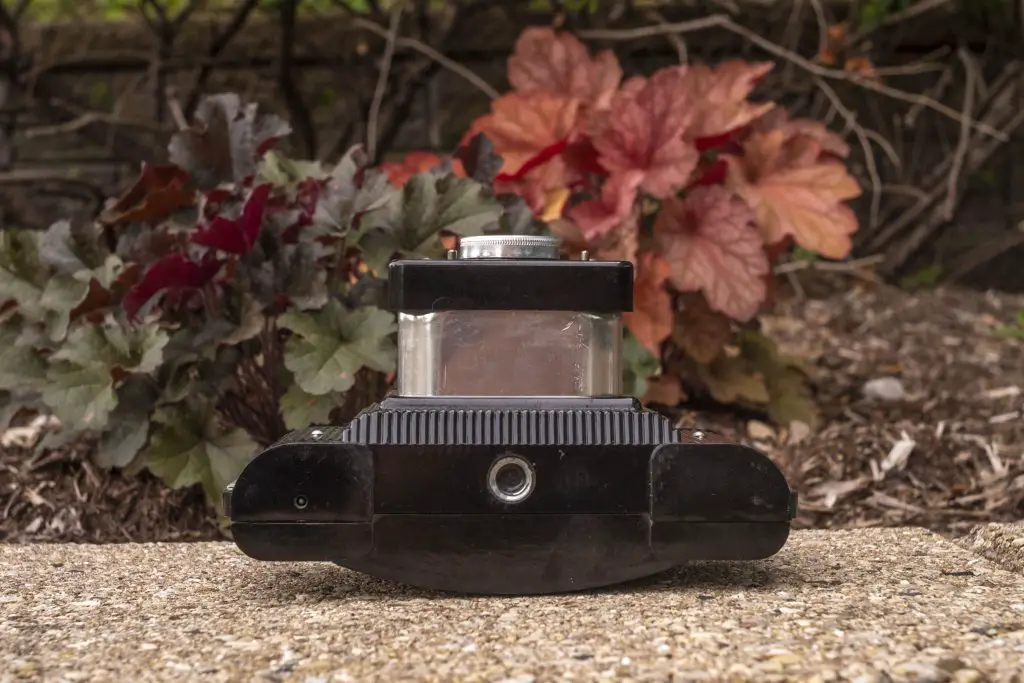
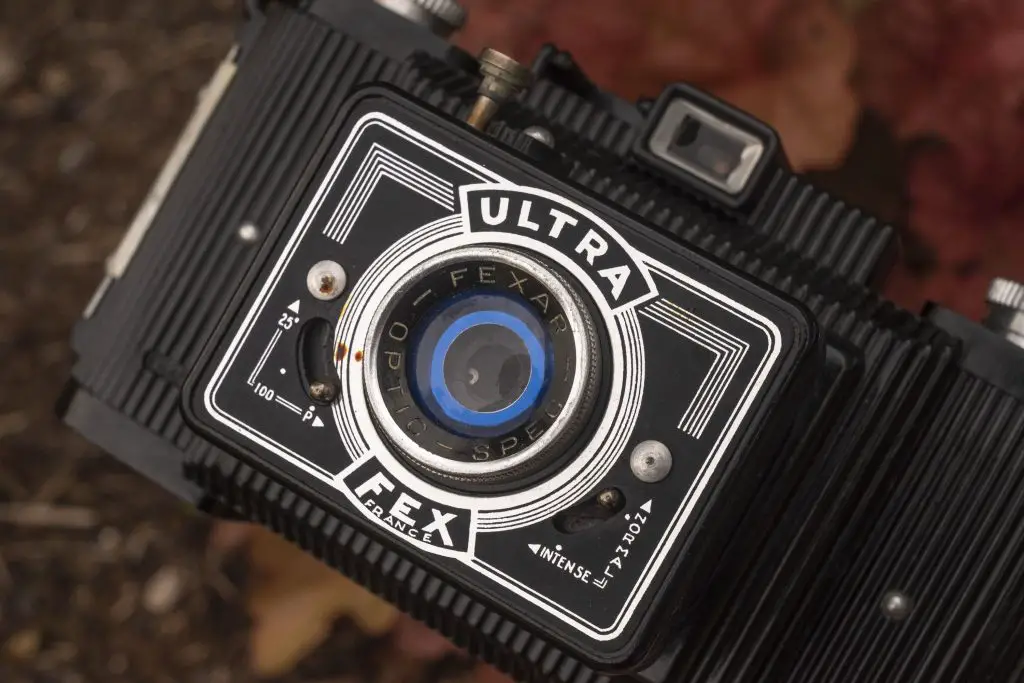
“a joues reduites” seems to refer to the smaller/thinner flanges.of 620 compared to 120
L’appareil utilise la pellicule 620 a cause du brevet du 21 avril 1949 de monsieur bouchetal de la roche: perfectionnements aux appareils photographiques caractéristiques en ce que la bobine sur laquelle est enroulée la pellicule vierge est guidée sur toute sa longueur par une broche cylindrique la traversant de part en part et venant se viser par une extrémité dans l’une des parois du corp même du boitier ,son autre extrémité traversant la paroi opposée dudit boitier et comportant un bouton moleté de commande . Les appareil qui semble sommaire a premier vue, il avait le but de remplacer les anciens box 6×9 .Fex a toujours apporter un soin a la fabrication de leur appareils .l’ Usine été a lyon ville France dans le quartier de Gerland . le Fex -utraflex a été créé en 1947 la fabrication s’est arrêtée vers 1962 il en existe 8 version et même une version avec un objectif anastigmat 1/ 5.6 et équiper d’un véritable obturateur synchro rapid de 1/25 A 1:250. L’entreprise fex indo a fabriquer un projecteur cinéma 9.5 de nombreux appareils 24×36 , kodapack 126 ,et appareils 110 et même le premier appareil photo jetable après usage en 1966 l’idée a été repris plus tard par kodak et fuji , fex cessé toute fabrication 1979
Thanks for the comment, Saint. I don’t understand French, so hopefully you said something nice! 🙂
That shutter is almost the simplest mechanism one could imagine, if you were to attempt a repair. Even some judiciously applied WD-40 and a little prodding with a small screwdriver might be enough. You can remove the shutter and front assembly just by undoing the 2 nuts you can see in the film compartment.
Normally I’d agree, but in the case of this camera, the shutter blades look physically damaged. Its almost as if someone tried to repair it unsuccessfully and made it worse. It’s OK though as even if this camera was working, I likely wouldn’t ever shoot it.
Hi,
I’m writing from France where these cameras cost nearly nothing and can be found everywhere. I’ve never bothered to purchase or even try one, but I’d be happy to send you one for the price of shipping 😉
I enjoy your reviews, which I discovered a few days ago as I was looking for information about the Teleroy I’ve just bought and will soon receive.
Too bad you couldn’t test the Foca, the 50mm 1.9 is a gem.
Cordialement,
Geo
Geo, thank you for the offer, but I’ll have to pass. Even if I had a working Ultra Fex, my backlog of cameras is infinitely long. I have hundreds of other cameras to shoot, and more keep showing up. In regards to the Foca, I do have a Foca Universel R that works perfectly which I have shot and made great images. One day I will get a review out for that one to hopefully redeem my first attempt at trying a Foca! 🙂
Fantastic detailed information and sadly only just discovered as was looking at the Fex a fully working one and was taken by its appearance, as I believe you where, also your comments or Review I should say, on a Voigtlander medium format.
I collect cameras and have over a hundred, I didn’t find out until about 10 years ago, that my grandfather and his father had studio in Manchester in the 1800 and early 1900 and again this was a chance discovery as my mother died in 1981 and her mother in 1980, I was looking to do a OU course on photography and went on line, the photo of a woman that advertised the course then, looked strangely familiar and it was one of my relations, I then through a bit of investigation found that my mums Brother George Watson again by chance, one day some people in the 80s knocked on his door in Cheetham hill and said they where collecting any old photos as like a record of history, before it all disappeared, so in the Manchester archives are four proof sheets of my Grandfathers.
I think that wonderful and worry that these sorts of records of history around the country will be lost in this digital age.
Of course there are still a few photographers and quite a surge on the old tactile SLRs but like the saying goes Nostalgia is a thing of the past.
I would be interested in looking at your other reviews and wondered if you have a link or if you’ve ever considered or maybe already have done a book.
I have a friend in Leicester who has dealt in Military ephemeral for decades and well two museums in his house and has rebuilt two air planes, it’s a education when I go and see him, he’s been featured in articles but never done a book.
I showed him my pride and joy Reid with lens and case that’s in near perfect condition, course he was over the moon as it was made in Leicester and used a lot by military.
So I got one that he didn’t know about, on his doorstep so to speak.
Thank You David
David, thank you for the kind feedback! Wow, having a Reid is a special camera in deed. I have the US equivalent of one, the Kardon, but haven’t so much as ever seen a Reid.
To answer your two questions, assuming you are viewing my site on a desktop browser, if you click the “Indexes” button at the top of every page, I have every review indexed by Manufacturer, Model, and Film format. As for a book, that is a very good idea and one that I have thought about doing many times, but I just don’t see it happening as I don’t have the time to put something like that together.